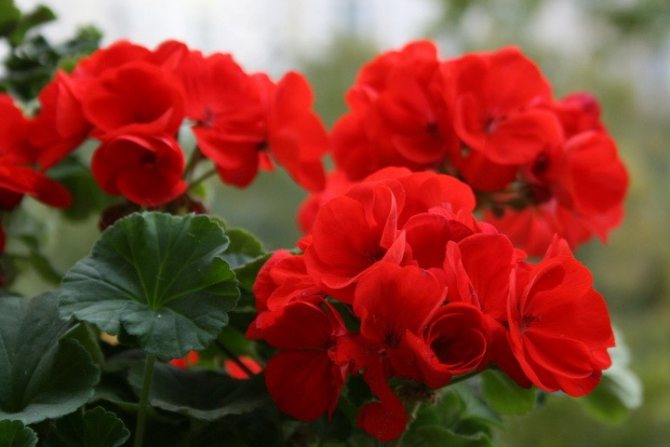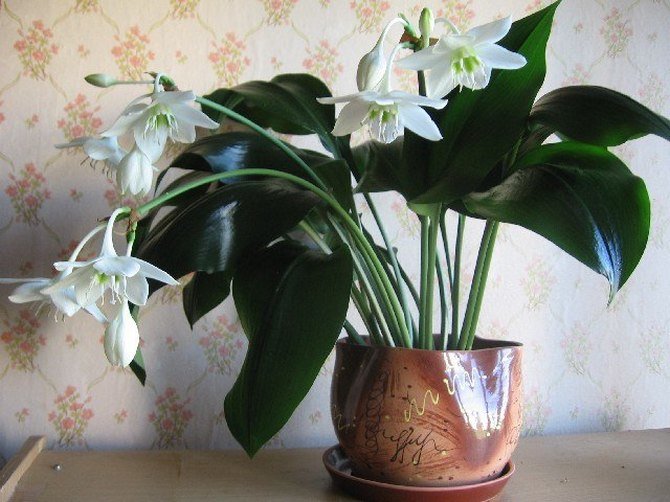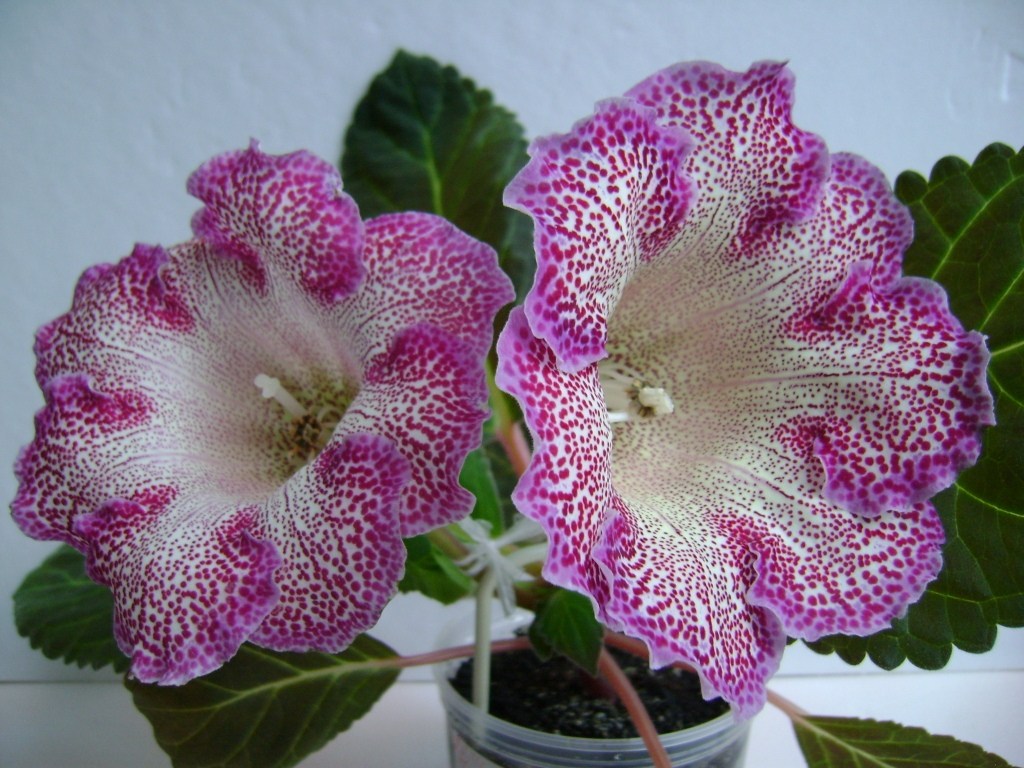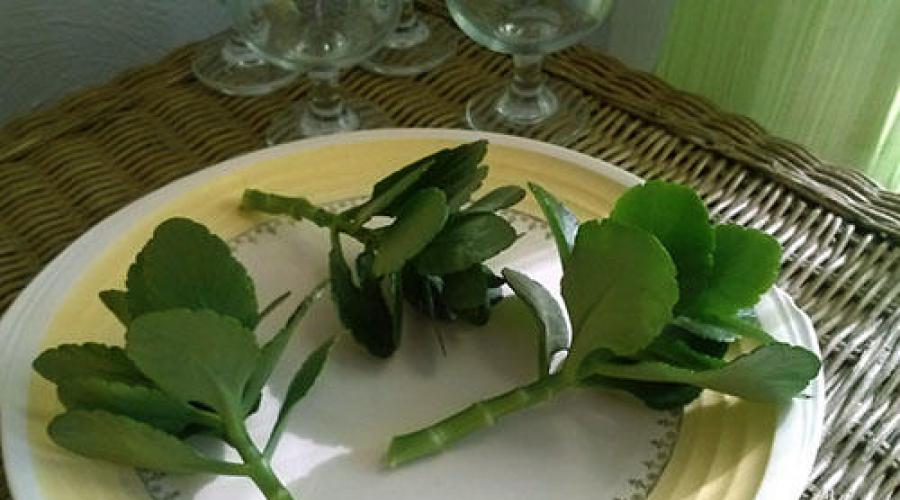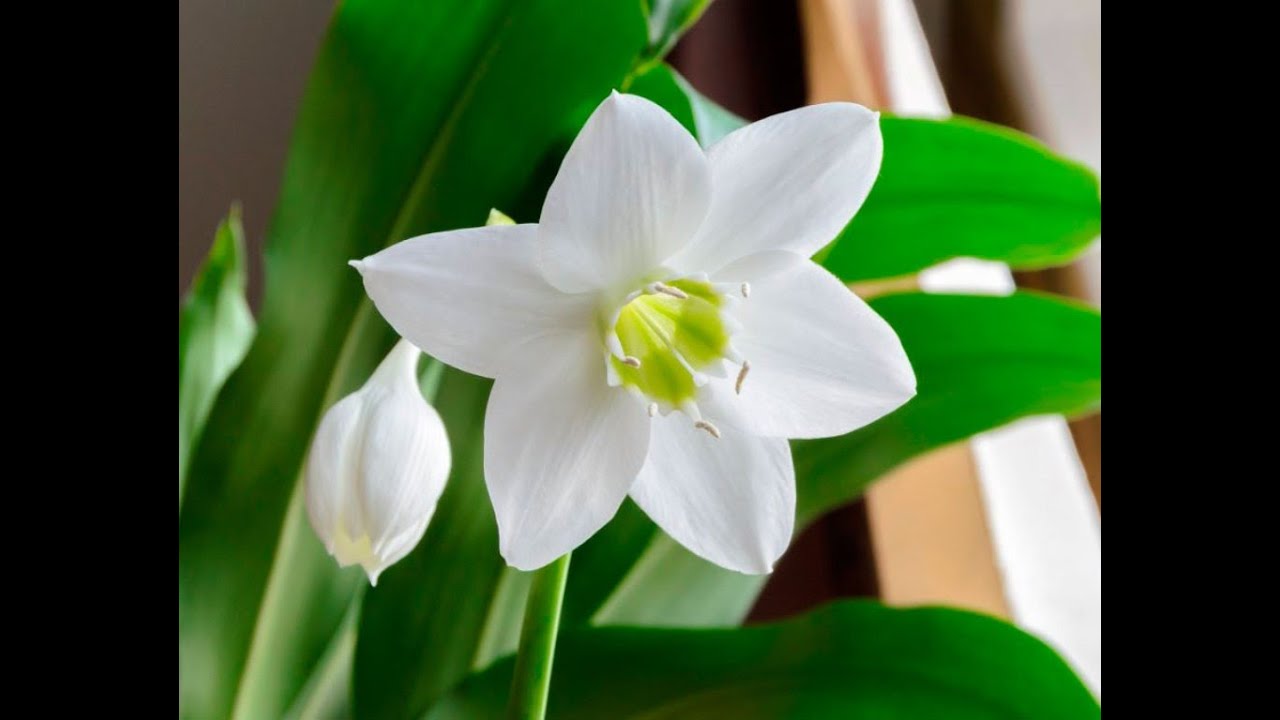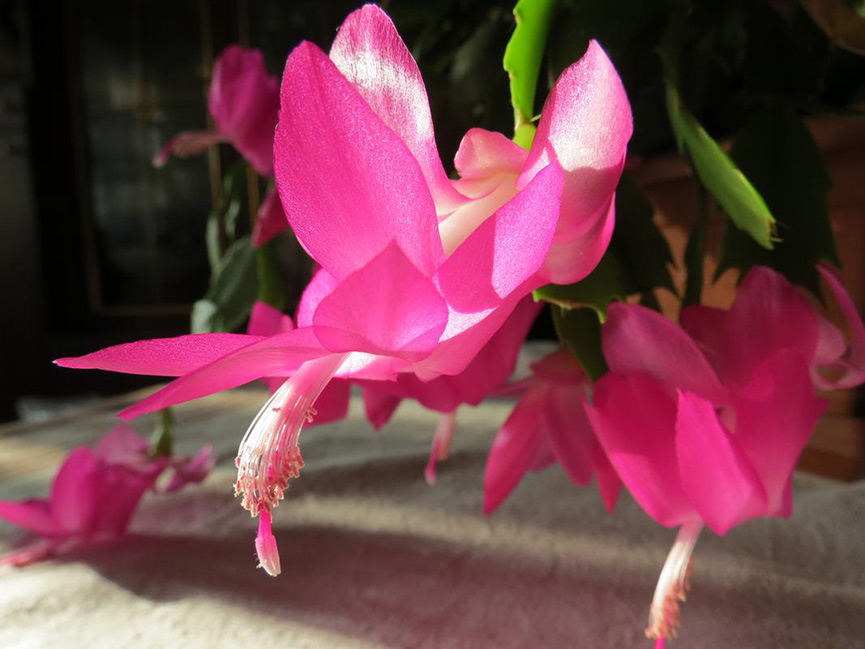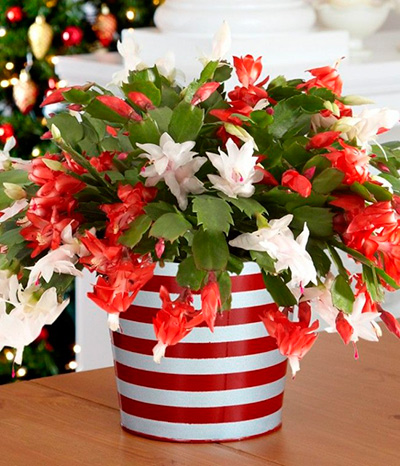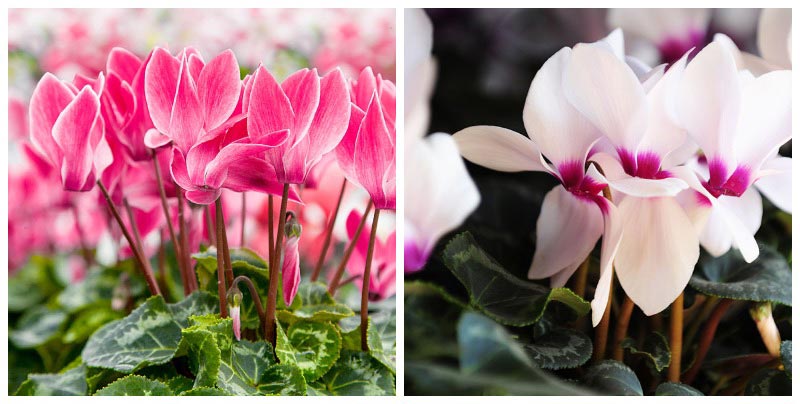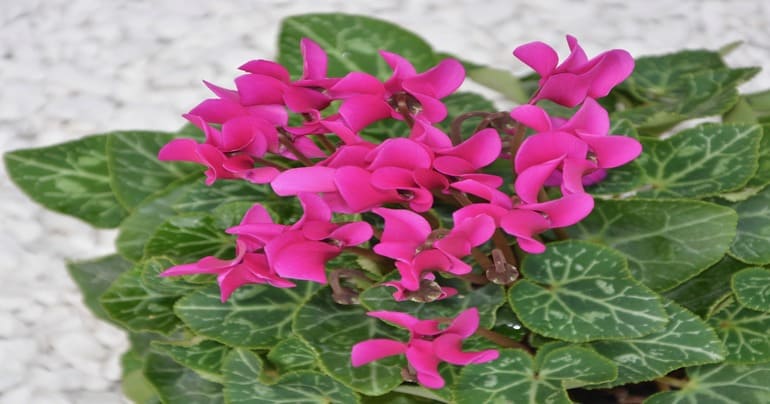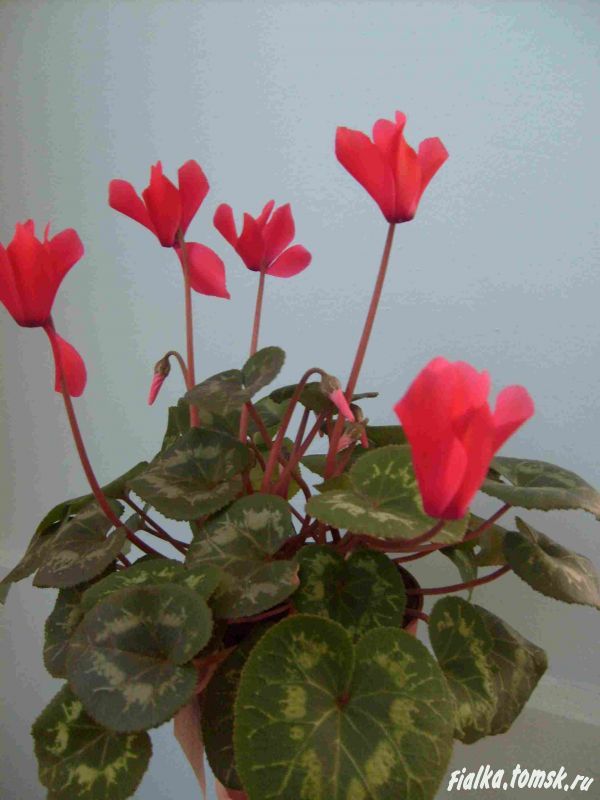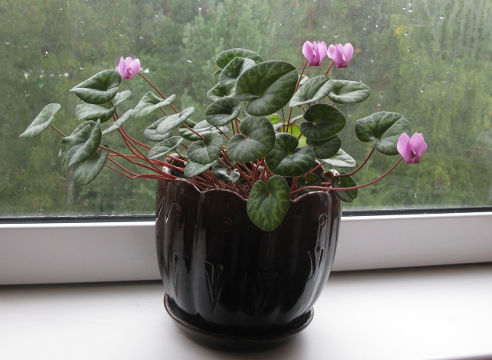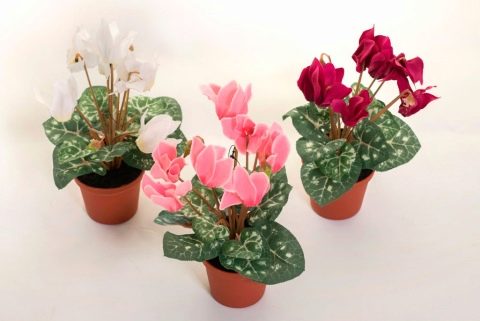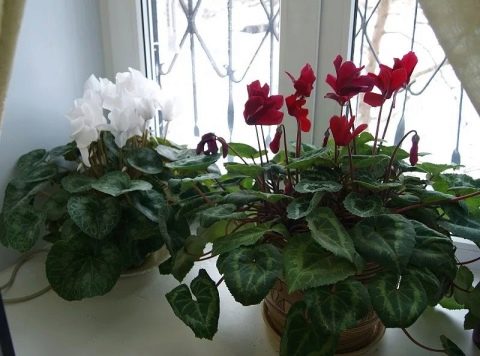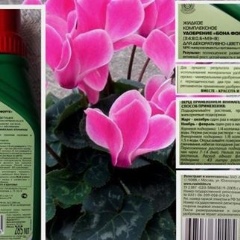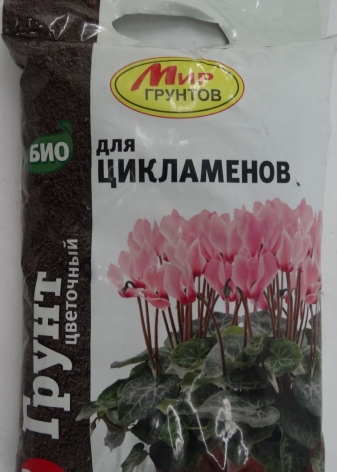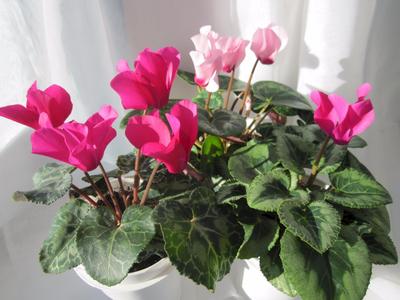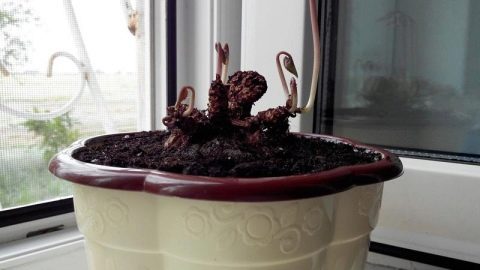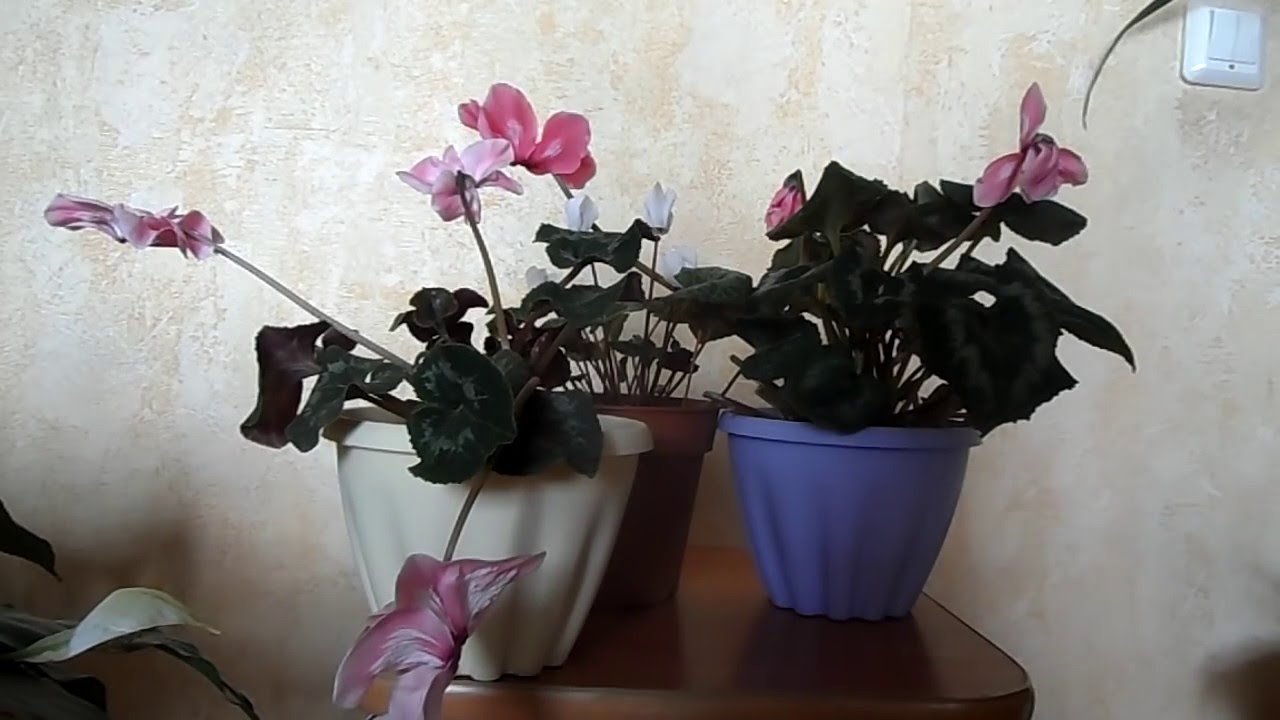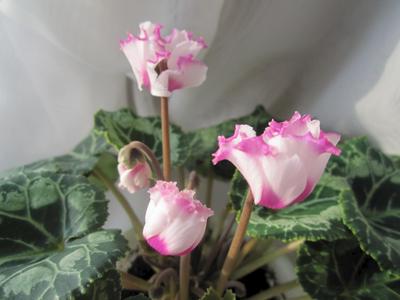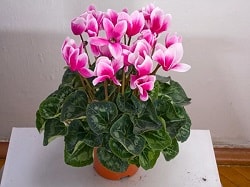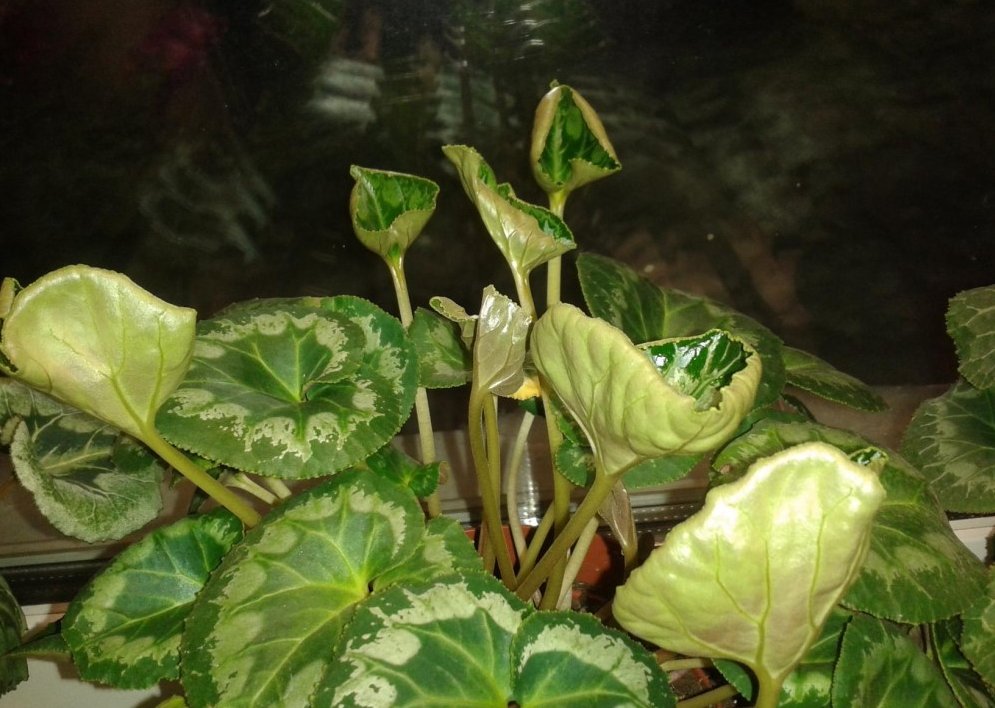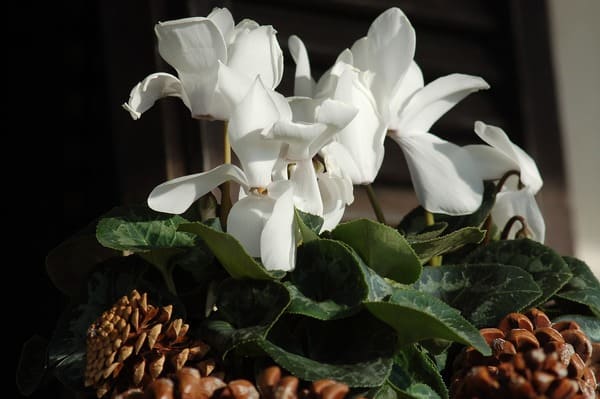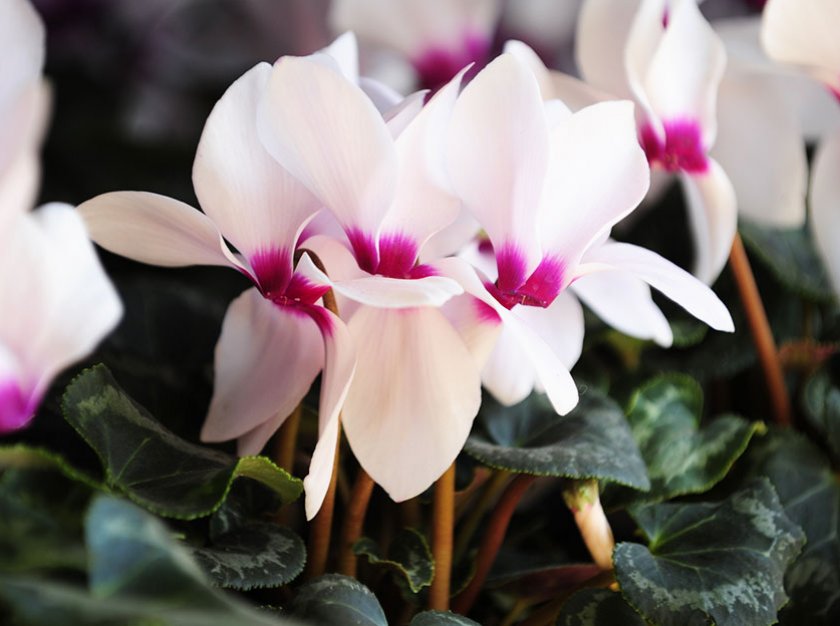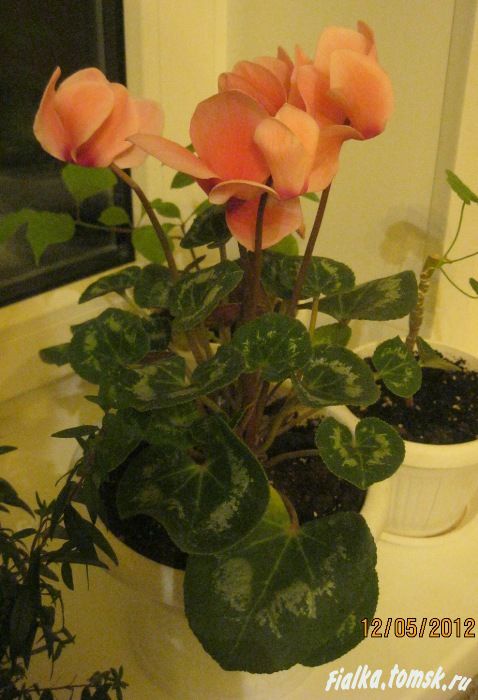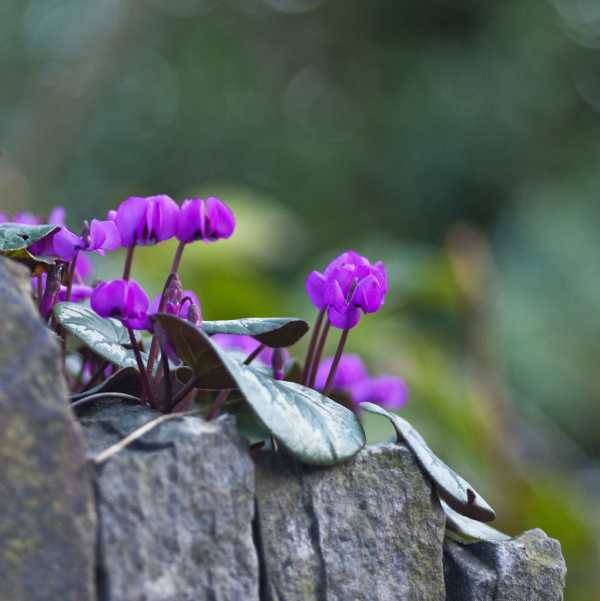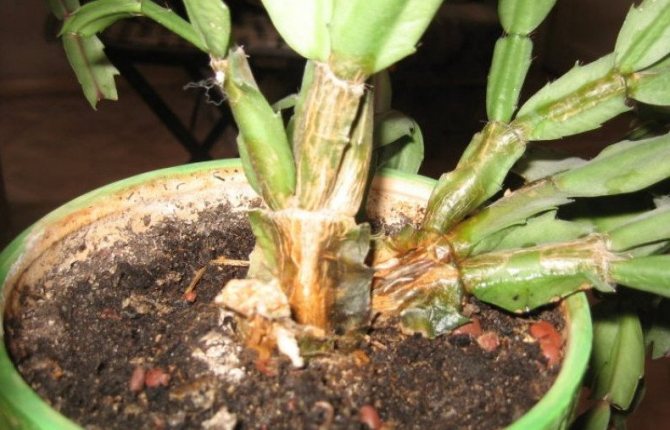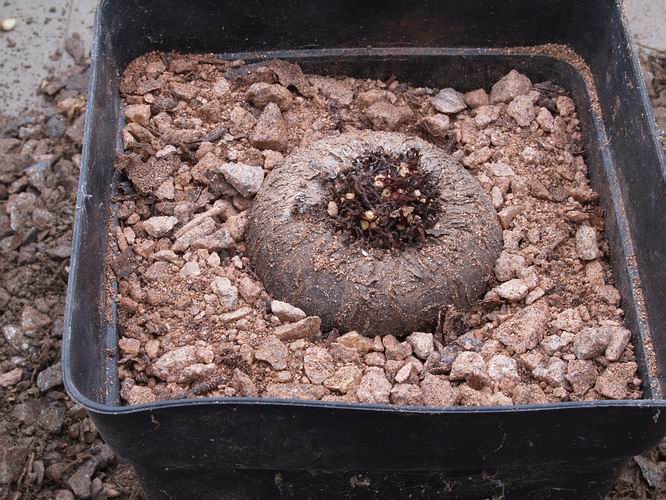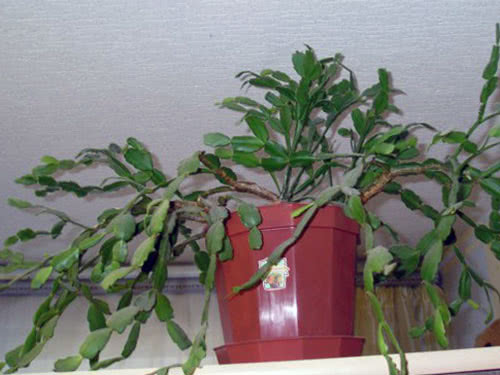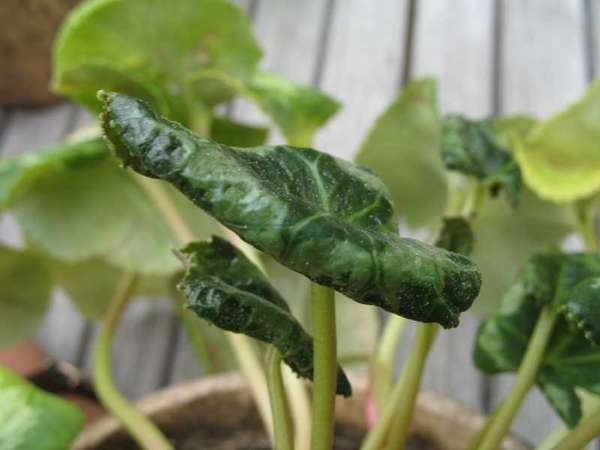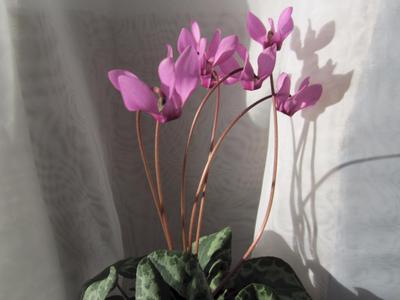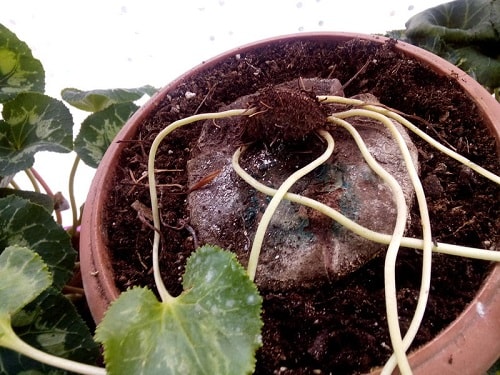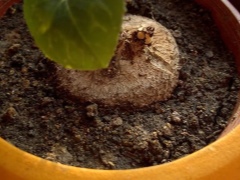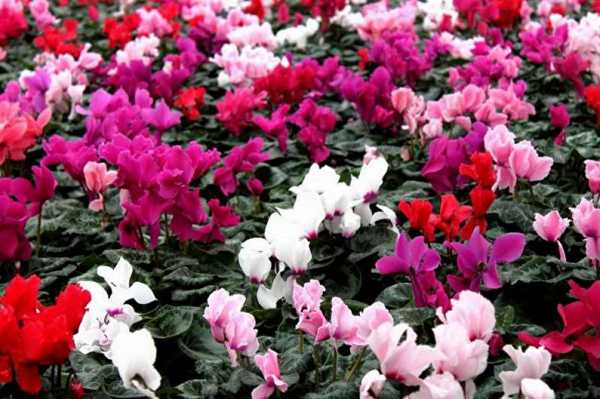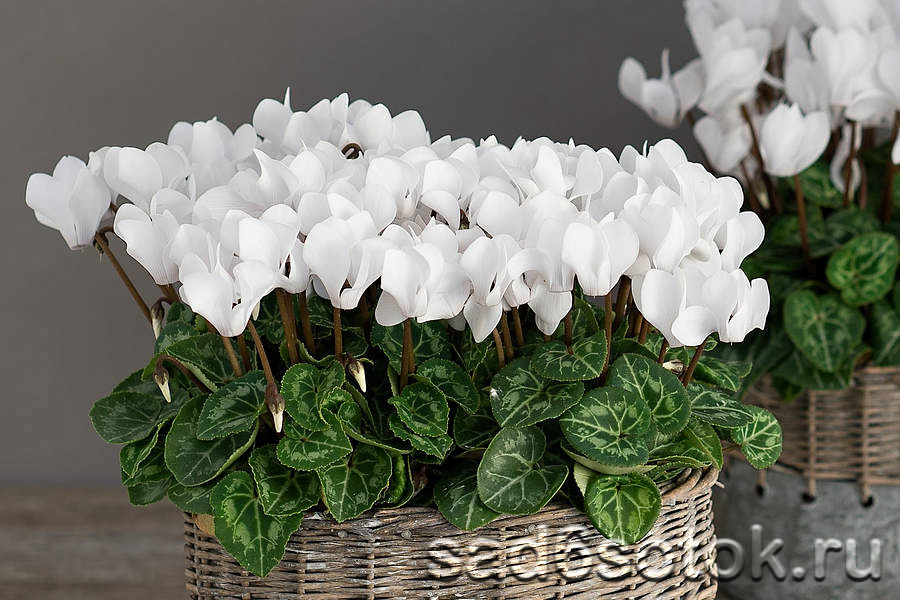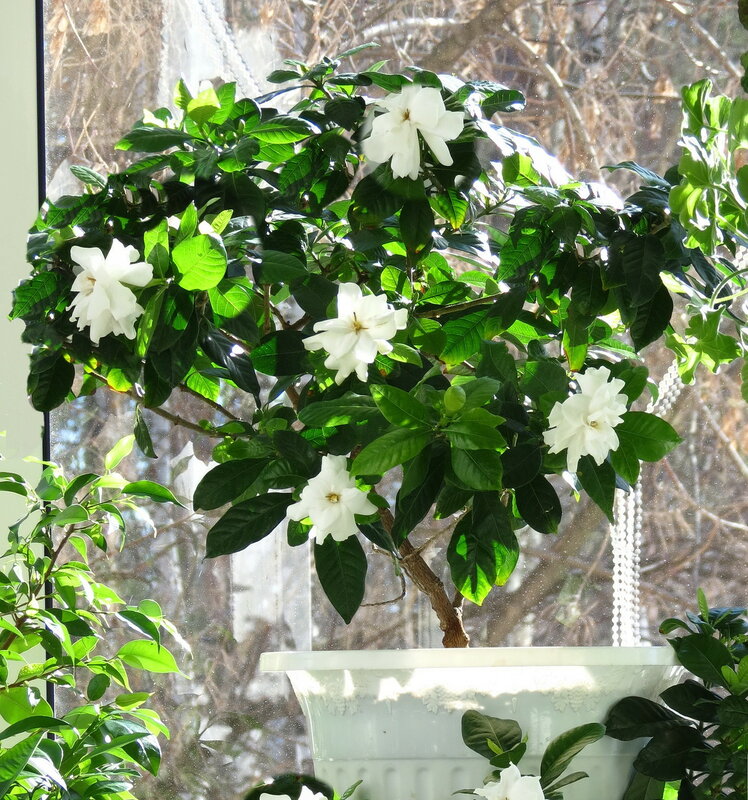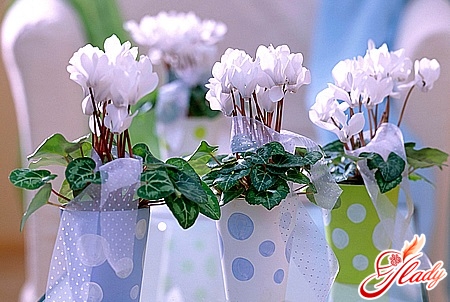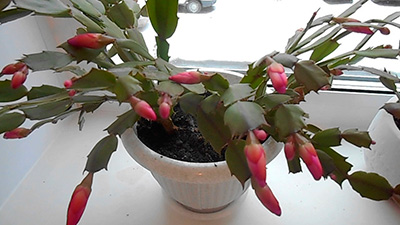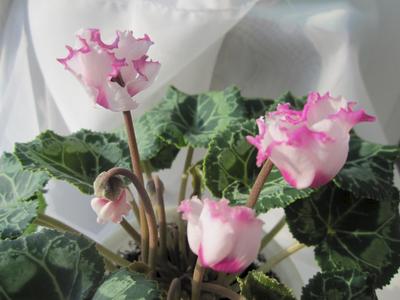About cyclamen ...
Cyclamen is a beautiful indoor flower with a long flowering period. It pleases flower growers from autumn to spring, with bright blooming buds. After flowering, it begins a dormant stage.
It is very important to know how to care for the cyclamen after flowering in order to achieve the re-emergence of the buds. Florists are invariably faced with the question of preserving the bulb. She must not only not die, but also gain strength
She must not only not die, but also gain strength.
Cyclamen belongs to the primrose family. In total, there are more than twenty varieties of such perennials. The culture is widespread in northeastern Africa, Iran in the Mediterranean. Also in the wild, the plant is found in Turkey. Some varieties are planted in gardens and at home. For growing cyclamen in a pot, only two types are used: European and Persian. European is found in stores most often. It is also called the alpine violet. Such cyclamens bloom profusely from spring to autumn. But Persian cyclamens are less common.
The history of the emergence of indoor forms dates back to the sixteenth century. At that time, cyclamens were actively cultivated by Europeans. After a while, breeders developed new hybrid forms. Modern cyclamens are different from their wild counterparts. They are brighter and more beautiful. There are hybrids with corrugated petals. Mini-forms of cyclamens are in no less demand.
Optimal watering rules
Cyclamens love moisture. The tubers produce many sprouts, on which delicate buds are formed during the flowering period. What to do so that the leaves do not turn yellow, and how to water it correctly:
- Water temperature - room temperature.
- Watering is regular and moderate.
- Water should not come into contact with leaves and tubers.
- The Persian variety is watered from above, the European one is closer to the edge of the pot.
- Use of settled water.
- Frequency - on slightly dried soil.
- After watering, the water from the sump must be drained.
With excessive watering, the roots rot and mites attack, with insufficient watering, the leaves turn yellow and curl. What if the soil is too wet? Transplant the cyclamen into a new substrate (sand, peat, humus and leafy soil in a ratio of 1: 1: 1: 3). It is advisable to replace the pot.
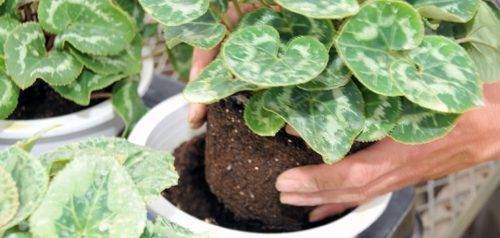 When the roots decay, the plant needs a transplant
When the roots decay, the plant needs a transplant
Why can't you wait until the soil is completely dry to water the plant again? As this leads to the loss of turgor (elasticity and greenery) by the leaves. The soil should only dry out slightly between watering procedures. During the period of growth and flowering, fertilizing should be done with a half dose diluted with water for irrigation. If you do not know what to do to prevent the leaves from turning yellow in the future, provide the cyclamen with a sufficient amount of feeding.
Description of the plant
Selection does not stand still, she did not bypass her attention and daylilies. Initially, there were only 15 varieties of them, and they grew in the territory of the countries of the East and in Central Europe.
Now more than 35,000 hybrid forms have been bred, differing in color, stem length, flower size, structure of petals and leaves.
Daylily, also called krasodnev, is a perennial plant with a long, upright stem topped with a cluster of bell-shaped or tubular flowers. Its second name is derived from the phrase "beauty for a day", which speaks of the short life of the peduncle. However, do not rush to be disappointed - the same plant is capable of producing several buds in a row, which gives the impression of constant flowering.
The buds release dates are indicated on the package of the plant. They are:
- the earliest - flowering occurs in late May or early June;
- early - bloom from the first days of July;
- medium - begin to awaken at the end of July;
- late - flowering occurs in early August.
Another nuance: the earlier you choose the variety, the more shortly you will admire the flower. May and June varieties flower for about 30 days, August - up to 65. The weather also dictates its own conditions: if it is warm and sunny outside, the early bloom releases a peduncle, and the interval between it and the next is a day, if the weather is cloudy and the air temperature is low , then the flowering interval is increased by a day.
Nitrogen overdose
Another possible reason why the strawberry does not bloom is that you "overfed" it with nitrogen and it healed.
When introducing mineral fertilizing, do not forget that this must be done strictly according to the instructions. An overdose of nitrogen leads to the fact that the plant is actively increasing its green mass and does not feel the need to worry about "procreation". If you notice that the strawberries are actively growing, but the flowers do not appear, most likely, the problem is precisely in the wrong fertilization.
What to do?
Temporarily stop feeding and water the strawberry bed well so that the nitrogen is washed out of the soil as soon as possible.
Cyclamen care at home
Temperature, location and lighting
The cyclamen likes it when there is bright lighting around him, but direct hits of the sun's rays are not desirable for him, it is better to hide the flower from them. In winter, for such a plant, a room is recommended where the air is warmed up only 12 degrees, not higher and with good lighting. In summer, room temperature is sufficient for the favorable growth of the flower.
The purple cyclamen does not have a clear dormant period, usually they do not winter for it, but it would not interfere with it. In this it differs from the alpine violet, which, in turn, after a period of flowering (May-June) goes to rest and begins to shed its foliage.
The best place to grow cyclamen is east and west windows
If the plant will be on the south side, it is important to protect it from direct sunlight. The room where the cyclamen grows must be regularly ventilated.
Air humidity
Cyclamen is a plant that loves high humidity. During growth, the leaves must be sprayed. As soon as the cyclamen begins to bloom, spraying is no longer necessary. To increase the moisture index, you can create a water mist near the plant. You can also place it on a pallet with wet pebbles. In winter, the cyclamen should be placed at a great distance from the central heating batteries.
Watering
At the time of flowering, you need to water so that water does not fall on the roots. It is necessary to distribute moisture evenly so that overflow does not happen or, conversely, does not dry out the earthen lump. The type of a Persian plant should be watered less during dormancy, but make sure that the earth does not dry out, while the European one is watered the same all year round.
The soil
It is very important to create aeration of the cyclamen root system. It is desirable to use a breathable coarse peat substrate. For an optimal soil composition, equal parts of sand, humus and peat are needed, as well as three parts of leafy soil.
For an optimal soil composition, equal parts of sand, humus and peat are needed, as well as three parts of leafy soil.
Top dressing and fertilization
Complete mineral fertilizer, which is applied to flowering plants, or organic matter - this is what you need to feed the cyclamen every two weeks. You need to start this from the moment the leaves develop and continue until it blooms.
Transfer
Alpine violets are transplanted when new leaves appear on it (end of June). With the European one, this must be done in early spring (March-April) and transplanted annually.It is advisable to transplant the plant into a low container and wide enough.
When transplanting, it is necessary to take into account one point, that the roots of the purple cyclamen are completely covered with earth, and in the Persian, the root system is half hidden in the ground. Then, until the roots thoroughly take root, watering should not be done so often, and then increase moisture.
Why don't peonies bloom and what to do?
Photo:
1. Age
Don't panic right away. Remember when your peonies are planted. If less than 2-3 years ago, it is too early to get upset. The first flowering can occur only in the 3rd year, while it will be scarce, every year the flowering will be more magnificent.
In addition, peonies growing in one place for more than 10 years may also stop blooming. Yes, they are centenarians and can sit in one place for up to 20 years. But at the same time they will not bloom. It is better to dig up the old peony, divide it, remove the rotten roots and plant it in a new place.
2. Bad place
Peonies do not bloom well in acidic soils and in conditions of constant shading, and regular winds will ruffle the buds strongly. Therefore, it may be necessary to reconsider the place of growing the peony and transplant the plant. It should be a well-lit place, but not constantly scorching sun rays. At a minimum, peonies should be out of the shade for at least 6 hours, preferably in the morning. In addition, you need to control the acidity of the soil: it must be neutral. Otherwise, it must be deoxidized with ash (lime can harm plants by changing the chemical composition of the soil too abruptly).
3. Deep landing
The optimum planting depth for peonies is about 5 cm of soil above the upper bud. Perhaps you have deeply deepened the division. In this case, the peony can and will grow, but it will not bloom: it is better to dig it up and transplant it higher.
There are two points to consider here. Firstly, if the soil under the peony is not sufficiently compacted, over time it can "fall" down, it will be dragged by water. Accordingly, you will not wait for flowering for sure. But on the other hand, if you plant a peony too close to the surface of the earth, it can freeze.
4. Lack of moisture
A lot of greenery evaporates a lot of moisture. Peonies are especially acute in need of a sufficient amount of moisture during the period of budding, flowering and laying buds of renewal. Perhaps you have forgotten about this moment of leaving. If there is not enough moisture, the plants will survive, and not "think" about flowering.
You need to water the peonies every 7-10 days, pouring up to 30 liters of water under the bush. Moreover, it is necessary to water the plants not at the root, but in diameter around the bush at a distance of about 30 cm. After all, the suction roots are not located in the center of the plant, but along the perimeter.
5. Imbalance in nutrition
Peonies will grow and grow green, not bloom, if they are not properly "fed". And in particular, give a lot of nitrogen and little potassium. What can we do this year to make peonies bloom next year? Feed them. And this should be done exactly at the time when the plant forms the buds of renewal. This is around July-August, a couple of weeks after eventual flowering. This is perhaps the most important food for peonies. We put 20 g of superphosphate and 10 g of potassium nitrate into the groove at a distance of 30 cm around the bush.
And about what peonies do not like and what kind of care is contraindicated for her, read this article:
What to do with cyclamen after flowering at home
Spring has come, the cyclamen has bloomed, what to do next at home, experienced flower growers know very well. First of all, it is necessary to remove all flowers, and this must be done together with the pedicel. As the leaves wither, they should be carefully pinched off, but not cut off at the tuber itself.
Important! It is recommended to sprinkle the gap with charcoal. Cut flowers can stand in water for a long time, up to two weeks. In this case, the water should be changed every couple of days.
To extend the standing time in the cut, you can cut the ends of the legs along
In this case, the water should be changed every couple of days. To extend the standing time in the cut, you can cut the ends of the legs along
Cut flowers can stand in water for a long time, up to two weeks. In this case, the water should be changed every couple of days. To extend the standing time in the cut, you can cut the ends of the legs lengthwise.
Flowers will stand in the water for a long time
When the growing season is over, the cyclamen has faded, what to do if the flowers and leaves have already been removed? Place the plant in a regularly ventilated area. You can take the pots of tubers to the balcony or garden, remembering to protect them from direct sunlight.
Caring for cyclamen after flowering includes the correct watering regime.
It is important to moisten the soil, preventing it from drying out and stagnant moisture
Because of what the plant does not bloom
However, often, due to some circumstances, the cyclamen refuses to bloom, while the plant does not necessarily look drooping or painful. Let's look at the main reasons why cyclamen does not bloom.
Incorrect fit
Most indoor flowers, including cyclamen, come to our homes from specialized nurseries and shops. Almost all ornamental crops need to be transplanted immediately after purchase. The main criterion for abundant and prolonged flowering is considered to be competent planting of a tuber, a third of which should be located above the soil level. With the full deepening of the tuber, the cyclamen does not receive the proper amount of useful trace elements and does not bloom.
In addition to a properly organized landing, you need to pay attention to the choice of location. The best option for placing a flowerpot with cyclamen is the southwest side of the house, where diffused sunlight prevails. Cyclamen loves sunlight, but reacts painfully to direct ultraviolet rays, which burn not only the leaves, but also the upper part of the root
Cyclamen loves sunlight, but reacts painfully to direct ultraviolet rays, which burn not only the leaves, but also the upper part of the root.
Temperature violation
Unlike most exotic plants, cyclamen loves coolness.
The flower feels best indoors, where the average daily air temperature is 15-18 ° C. A lower temperature regime is detrimental to this culture. In the summer, when the cyclamen is in the stage of rest and rest, it is necessary to create the appropriate conditions for the plant. High air temperature can cause not only the lack of bud formation, but also lead to wilting.
Excessive watering
It is not difficult to grow an indoor flower if you know the peculiarities of caring for a particular decorative culture. Cyclamen does not like excessive watering. Excess moisture promises major troubles, in particular, lack of flowering, frequent diseases, yellowing and untimely foliage, as well as rotting of the root system, which can lead to the death of the plant.
During the period when buds begin to form and buds bloom, it is recommended to water the flower no more than once every 7-10 days. If the soil is still wet, the wetting procedure can be postponed for several days. In the summer, the amount of watering is significantly reduced, it is enough to moisten the substrate once a month.
Diseases and pests
To answer the question of whether the cyclamen will bloom, you need to make sure that there are no signs of any diseases or the presence of harmful insects on the flower. With illiterate care, this decorative culture can suffer from fusarium, gray rot, wet rot and other fungal, bacterial and viral diseases. Often cyclamen becomes the target of attacks by thrips, aphids and cyclamen mites.
How to water fuchsia at home
The most important condition for keeping fuchsia is moderate watering. The growth and flowering process of the bush depend on its regularity.Water needs settled or filtered. Spraying will help to refresh the plant on stuffy days. You need to water the flower as the top of the soil dries up.

Watering
Important! At the moment of wilting of the leaf plate after spraying, fuchsia must be closed with a plastic bag. This procedure will restore elasticity to the leaves.
Fuchsia is considered a plant with positive energy. It helps to strengthen family relationships, develop a person's intuition and creativity. The sweet and sour fruits of this amazing plant are used as a seasoning for meat dishes.

Fuchsia flowers
A bright beauty, rich in a variety of varieties - fuchsia - will be a wonderful exhibit in the collection of a florist. With proper care, she will thank you with beautiful flowering for many years.
Diseases
Fungal diseases are another common cause of yellowness on the leaf surface of cyclamen. The most common diseases of flowering plants are fusarium and gray rot.
Fusarium begins to appear from the top of the plant. Leaves turn yellow gradually, covering the entire surface of the green mass. Sometimes the top is completely affected, and in some cases half of the plant is affected. The healthy part seems to continue to grow for a while, but this is a temporary phenomenon. In the end, the plant will still die completely if the disease enters the active stage.
When the first signs of the disease appear, it is recommended to urgently process the leaves, tuber and roots of the culture. A solution of "Fundazol" is introduced into the soil, and the aerial part is sprayed with the drug "Topsin-M".
In order to prevent the development of this disease in cyclamen, it is imperative to sterilize the soil purchased for growing flowers at home.
A fungal disease such as gray rot appears when the temperature regime is violated (in a cold room with drafts), high humidity and a lack of free space for plants. First, you can see gray mold on the leaves, and then yellowness and wilting. Fungicidal preparations and restoration of normal conditions of detention will help to rid the flower of this fungus.

